5.2.6 Switching between treatment regimens
If a patient starts the 9-month all-oral MDR/RR-TB regimen but is later found to be ineligible following detection of M. tuberculosis resistance to fluoroquinolones, the patient must switch to a different regimen. Such patients might be eligible for a 6-month BPaL regimen if their prior exposure to bedaquiline and linezolid was for less than 1 month and there is no demonstrated resistance to any components of the BPaL regimen. The BPaL regimen may only be considered if the patient meets the eligibility criteria and the regimen is available and feasible in the setting.
 Feedback
Feedback